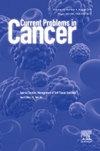Updated perspectives on visceral pleural invasion in non-small cell lung cancer: A propensity score-matched analysis of the SEER database
IF 2.3
4区 医学
Q3 ONCOLOGY
引用次数: 0
Abstract
Background
Visceral pleural invasion (VPI), including PL1 (the tumor invades beyond the elastic layer) and PL2 (the tumor extends to the surface of the visceral pleura), plays a crucial role in staging Non-Small Cell Lung Cancer (NSCLC). However, there is a growing debate concerning the prognostic significance of PL1 and PL2. This study, therefore, conducted the analysis of the prognostic differences between PL1 and PL2 to inform more precise staging and treatment strategies.
Methods
Altogether, 12,223 resected T1-3N0M0 NSCLC patients from 2010 to 2015 were enrolled. Utilizing propensity score matching (PSM) and Kaplan-Meier survival analysis, this study explored the prognosis of patients under different settings of VPI and the impact of various treatments. Finally, a machine learning model was constructed to accurately predict the 5-year survival probability.
Results
For tumors ≤ 50 mm, PL1 did not confer a survival disadvantage compared to PL0 (the tumor within the elastic layer of the visceral pleura), whereas PL2 did. Notably, patients with tumor sizes 31–50 mm and PL2 have a similar poor prognosis to patients with tumor sizes of 51–70 mm and PL0. Further survival analysis showed that lobectomy offered better outcomes than sublobectomy. Moreover, patients in this study did not benefit from postoperative radiotherapy or chemotherapy. A model with high efficacy in predicting the 5-year survival probability was developed eventually.
Conclusion
These data support the viewpoint that staging patients with tumor ≤ 30 mm and PL1 as T1. Those with 31–50 mm tumors and PL2, exhibiting a similar poor prognosis to patients with T3 and PL0, warrant a T3 classification. Apart from optimizing the TNM staging system, machine learning could also play a significant role in prognostic prediction.
非小细胞肺癌内脏胸膜浸润的最新观点:SEER数据库的倾向评分匹配分析
内脏胸膜浸润(VPI),包括PL1(肿瘤侵入弹性层外)和PL2(肿瘤延伸到内脏胸膜表面),在非小细胞肺癌(NSCLC)的分期中起着至关重要的作用。然而,关于PL1和PL2的预后意义的争论越来越多。因此,本研究对PL1和PL2的预后差异进行了分析,以提供更精确的分期和治疗策略。方法共纳入2010 - 2015年12223例T1-3N0M0 NSCLC患者。本研究利用倾向评分匹配(PSM)和Kaplan-Meier生存分析,探讨不同VPI设置下患者的预后以及不同治疗方法的影响。最后,构建机器学习模型,准确预测5年生存率。结果对于≤50 mm的肿瘤,与PL0(内脏胸膜弹性层内的肿瘤)相比,PL1不会导致生存劣势,而PL2则会。值得注意的是,肿瘤大小为31-50 mm和PL2的患者与肿瘤大小为51-70 mm和PL0的患者预后相似。进一步的生存分析表明,肺叶切除术比肺叶亚切除术的预后更好。此外,本研究中的患者没有从术后放疗或化疗中获益。最终建立了一个预测5年生存率的高效模型。结论支持肿瘤≤30mm、PL1分期为T1的观点。那些31-50 mm肿瘤和PL2,表现出与T3和PL0患者相似的不良预后,需要T3分类。除了优化TNM分期系统外,机器学习还可以在预后预测中发挥重要作用。
本文章由计算机程序翻译,如有差异,请以英文原文为准。
求助全文
约1分钟内获得全文
求助全文
来源期刊

Current Problems in Cancer
医学-肿瘤学
CiteScore
5.10
自引率
0.00%
发文量
71
审稿时长
15 days
期刊介绍:
Current Problems in Cancer seeks to promote and disseminate innovative, transformative, and impactful data on patient-oriented cancer research and clinical care. Specifically, the journal''s scope is focused on reporting the results of well-designed cancer studies that influence/alter practice or identify new directions in clinical cancer research. These studies can include novel therapeutic approaches, new strategies for early diagnosis, cancer clinical trials, and supportive care, among others. Papers that focus solely on laboratory-based or basic science research are discouraged. The journal''s format also allows, on occasion, for a multi-faceted overview of a single topic via a curated selection of review articles, while also offering articles that present dynamic material that influences the oncology field.
 求助内容:
求助内容: 应助结果提醒方式:
应助结果提醒方式:


